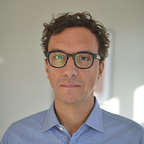New Lighting for San Francisco — procurement innovation, entrepreneurship and measurement
San Francisco Water and Utilities Commission (SFPUC) committed a budget of $16 million to upgrading their lighting and cutting carbon emissions. A bold, needs-based approach to procurement allowed them to pilot innovative technology, resulting in a new overall vision for street lighting.
The results of procuring differently
Between 2009 and 2012, SFPUC was not able to contract a suitable upgrade for its 18.500 street lights. This was because the scale of the project meant the City was reluctant to buy immature products, resulting in overly cautious RfPs with few respondents.
In 2012, they decided to take a different approach to procurement and opened up their needs in the form of an open challenge. This was designed to find a solution which could effectively address their needs, rather than buying a pre-specified product. The focus of the procurement process had shifted from trying to deliver a product to identifying the potential opportunities available on the market.
This approach yielded more encouraging results, with 59 entries submitted for evaluation by international and local experts. SFPUC selected Paradox Engineering, a small Swiss company previously unknown to the city, to pilot its PE.AMI solution. PE.AMI was chosen for its ground-breaking interoperability (its ability to work with other systems) and scalability. The pilot was launched within 6 months, with surprising results.
PE.AMI enabled the SFPUC to develop multiple applications on the same wireless network, without the need to build additional infrastructure for present and future services. With PE.AMI, both narrowband and broadband data traffic can be supported, thereby increasing data transmission and reliability among on-field devices and the remote server.
The direct outcome of this interoperability is that PE.AMI can be used to remotely manage, monitor and provide a whole host of other urban services in addition to the city’s public lighting. This means that street lights can become a core architectural pillar in the delivery of a wide range of urban services.
SFPUC took away two key learnings from this new approach to procurement: firstly, they learned that procurement can be used as a strategic tool to evaluate and pilot innovative technology. This included recognizing the benefits of a loose permitting document and piloting before buying. Secondly, that delivering different urban services through one technology may result in direct cost savings while gaining flexibility.
Measuring results in evaluative procurement
With the learnings of the first pilot, San Francisco launched a second independent procurement round which explicitly aimed at evaluating additional LED street light wireless monitoring systems. The sourcing document was launched in summer 2012, receiving eighteen submissions for piloting. Eight vendors were invited to participate, while ultimately three control systems were installed and evaluated. The SFPUC led this second round of pilots between December 2013 and April 2014.
Control systems were trialed for five months in three separate locations: the Financial District, Presidio Heights, and the Inner Sunset District. Each district covered unique site-specific challenges, such as urban density, land relief, and levels of electromagnetic interference.
The three proposed systems were evaluated according to their installation process, central management system functionality, ease of use, and field performance. For example, SFPUC maintenance staff recorded installation times and provided qualitative feedback on their experience with each system. Thereafter, eight basic control functions were tested for proper implementation and ease of use. This included testing for failure rates, energy consumption, and responsiveness to commands.
Control systems were also subject to an analysis of their network topology, communications protocol, and interoperability with the city’s rainfall monitors. While the tests of the prospective technologies had obvious benefits for the city, the companies also found them valuable as they were able to field-test their products and installation procedures.
The following table from the SFPUC report gives a summary of some of the evaluation results:
* VNC viewer was used by Lumewave for pilot project, but would not be necessary in a full-scale installation, where the CMS could be hosted by the customer on its own servers. Lumewave also indicated that browser-based access is in development and expected soon.
** The process of checking fixture status was with the Ineso system, but status reports often were inaccurate
The SFPUC evaluation report also included some key insights for other cities interested in upgrading their street lighting, namely:
- The need to geo-locate fixtures during installation makes installing control systems significantly more complex than typical street lighting upgrades
- Care must be taken when specifying system design and architecture to ensure the systems resilience in the face of a communication failure
- There was a high correlation between system polish and performance, and past street lighting controls experience.
In addition to the implementation team’s analysis of the three lighting systems being piloted, the evaluation report summarized the results of a public survey in the form of online surveys and live demonstrations. This gathered extensive quantitative and qualitative feedback on the perception of LED street lights, particularly regarding brightness, dimming, and the overall sense of the living environment. Feedback was particularly solicited on pedestrian safety, visual comfort, and light quality.
Takeaways
By identifying and communicating its needs and emphasizing results as the goal of procurement, San Francisco is gaining smarter, less polluting street lighting, making a more attractive urban landscape. Needs-based piloting has helped San Francisco find a previously unknown solution, inspiring new technological and service synergies that were not part of the original specification.
